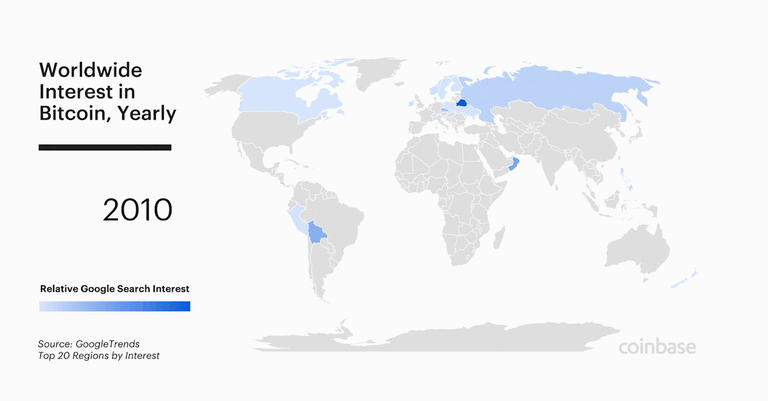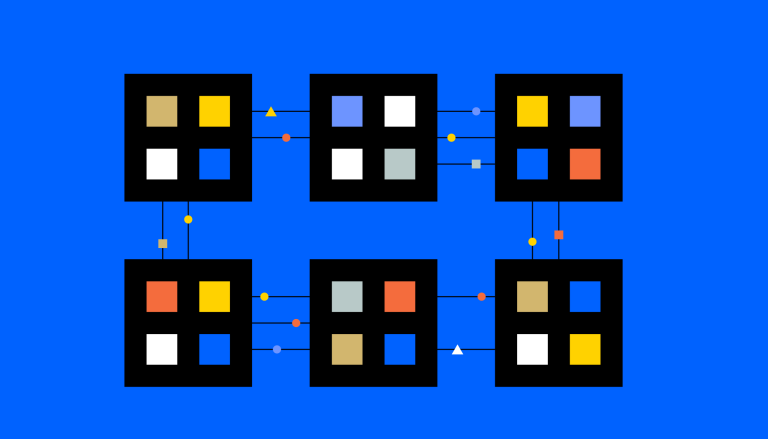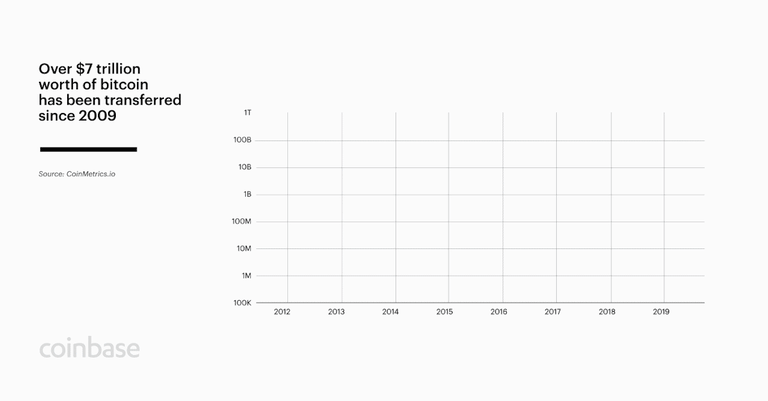CREST BEGINNER'S GUIDE
What is Bitcoin?

The world’s first widely-adopted cryptocurrency. With Bitcoin, people can securely and directly send each other digital money on the internet.
Bitcoin was created by Satoshi Nakamoto, a pseudonymous person or team who outlined the technology in a 2008 white paper. It’s an appealingly simple concept: bitcoin is digital money that allows for secure peer-to-peer transactions on the internet.
Unlike services like Venmo and PayPal, which rely on the traditional financial system for permission to transfer money and on existing debit/credit accounts, bitcoin is decentralized: any two people, anywhere in the world, can send bitcoin to each other without the involvement of a bank, government, or other institution.
Every transaction involving Bitcoin is tracked on the blockchain, which is similar to a bank’s ledger, or log of customers’ funds going in and out of the bank. In simple terms, it’s a record of every transaction ever made using bitcoin.
Unlike a bank’s ledger, the Bitcoin blockchain is distributed across the entire network. No company, country, or third party is in control of it; and anyone can become part of that network.
There will only ever be 21 million bitcoin. This is digital money that cannot be inflated or manipulated in any way.
It isn’t necessary to buy an entire bitcoin: you can buy just a fraction of one if that’s all you want or need.
Key Questions
What is BTC?
BTC is the abbreviation for bitcoin.
Is Bitcoin cryptocurrency?
Yes, bitcoin is the first widely adopted cryptocurrency, which is just another way of saying digital money.
Is there a simple bitcoin definition?
Bitcoin is digital money that allows secure and seamless peer-to-peer transactions on the internet.
What’s the price of bitcoin?
The current price of Bitcoin can be found on Coinbase’s website.
Is Bitcoin an investment opportunity?
Like any other asset, you can make money by buying BTC low and selling high, or lose money in the inverse scenario.
At what price did Bitcoin start?
One BTC was valued at a fraction of a U.S. penny in early 2010. During the first quarter of 2011, it exceeded a dollar. In late 2017, its value skyrocketed, topping out at close to $20,000. You can track the price of bitcoin here.

Bitcoin is digital money that allows for secure and seamless peer-to-peer transactions on the internet
Bitcoin Basics
Since Bitcoin’s creation, thousands of new cryptocurrencies have been launched, but bitcoin (abbreviated as BTC) remains the largest by market capitalization and trading volume.

Depending on your goals, bitcoin can function as
– an investment vehicle
– a store of value similar to gold
– a way to transfer value around the world
– even just a way to explore an emerging technology
Bitcoin is a currency native to the Internet. Unlike government-issued currencies such as the dollar or euro, Bitcoin allows online transfers without a middleman such as a bank or payment processor. The removal of those gatekeepers creates a whole range of new possibilities, including the potential for money to move around the global internet more quickly and cheaply, and allowing individuals to have maximum control over their own assets.
Bitcoin is legal to use, hold, and trade, and can be spent on everything from travel to charitable donations. It’s accepted as payment by businesses including Microsoft and Expedia.
Is bitcoin money? It’s been used as a medium of exchange, a store of value, and a unit of account—which are all properties of money. Meanwhile, it only exists digitally; there is no physical version of it.
Who created Bitcoin?
To really grasp how bitcoin works, it helps to start at the beginning. The question of who created bitcoin is a fascinating one, because a decade after inventing the technology—and despite a lot of digging by journalists and members of the crypto community—its creator remains anonymous.
The principles behind Bitcoin first appeared in a white paper published online in late 2008 by a person or group going by the name Satoshi Nakamoto.
This paper wasn’t the first idea for digital money drawing on the fields of cryptography and computer science—in fact, the paper referred to earlier concepts—but it was a uniquely elegant solution to the problem of establishing trust between different online entities, where people may be hidden (like bitcoin’s own creator) by pseudonyms, or physically located on the other side of the planet.
Nakamoto devised a pair of intertwined concepts: the bitcoin private key and the blockchain ledger. When you hold bitcoin, you control it through a private key—a string of randomized numbers and letters that unlocks a virtual vault containing your purchase. Each private key is tracked on the virtual ledger called the blockchain.
When Bitcoin first appeared, it marked a major advance in computer science, because it solved a fundamental problem of commerce on the internet: how do you transfer value between two people without a trusted intermediary (like a bank) in the middle? By solving that problem, the invention of bitcoin has wide-ranging ramifications: As a currency designed for the internet, it allows for financial transactions that range across borders and around the globe without the involvement of banks, credit-card companies, lenders, or even governments. When any two people—wherever they might live—can send payments to each other without encountering those gatekeepers, it creates the potential for an open financial system that is more efficient, more free, and more innovative. That, in a nutshell, is bitcoin explained.

Bitcoin creates the potential for an open financial system that is more efficient, more free, and more innovative.
How Bitcoin works
Unlike credit card networks like Visa and payment processors like Paypal, bitcoin is not owned by an individual or company. Bitcoin is the world’s first completely open payment network which anyone with an internet connection can participate in. Bitcoin was designed to be used on the internet, and doesn’t depend on banks or private companies to process transactions.
One of the most important elements of Bitcoin is the blockchain, which tracks who owns what, similar to how a bank tracks assets. What sets the Bitcoin blockchain apart from a bank’s ledger is that it is decentralized, meaning anyone can view it and no single entity controls it.
Here are some details about how it all works:
Specialized computers known as ‘mining rigs’ perform the equations required to verify and record a new transaction. In the early days, a typical desktop PC was powerful enough to participate, which allowed pretty much anyone who was curious to try their hand at mining. These days the computers required are massive, specialized, and often owned by businesses or large numbers of individuals pooling their resources. (In October 2019, it required 12 trillion times more computing power to mine one bitcoin than it did when Nakamoto mined the first blocks in January 2009.)

The miners’ collective computing power is used to ensure the accuracy of the ever-growing ledger. Bitcoin is inextricably tied to the blockchain; each new bitcoin is recorded on it, as is each subsequent transaction with all existing coins.
How does the network motivate miners to participate in the constant, essential work of maintaining the blockchain—verifying transactions? The Bitcoin network holds a continuous lottery in which all the mining rigs around the world race to be the first to solve a math problem. Every 10 min or so, a winner is found, and the winner updates the Bitcoin ledger with new valid transactions. The prize changes over time, but as of early 2020, each winner of this raffle was awarded 12.5 bitcoin.
At the beginning, a bitcoin was technically worthless. As of the end of 2019, it was trading at around $7,500. As bitcoin’s value has risen, its easy divisibility (the ability to buy a small fraction of one bitcoin) has become a key attribute. One bitcoin is currently divisible to eight decimal places (100 millionths of one bitcoin); the bitcoin community refers to the smallest unit as a ‘Satoshi.’
Nakamoto set the network up so that the number of bitcoin will never exceed 21 million, ensuring scarcity. There are currently around 3 million bitcoin still available to be mined, which will happen more and more slowly. The last blocks will theoretically be mined in 2140.

Cryptocurrencies and traditional currencies share some traits — like how you can use them to buy things or how you can transfer them electronically — but they’re also different in interesting ways. Here are a few highlights.
Bitcoin is the world’s first completely open payment network which anyone with an internet connection can participate in.
Key question
How does bitcoin have value?
Essentially the same way a traditional currency does – because it’s proven itself to be a viable and convenient way to store value, which means it can easily be traded for goods, services, or other assets. It’s scarce, secure, portable (compared to, say, gold), and easily divisible, allowing transactions of all sizes.

How to invest with Bitcoin
The easiest way to invest with bitcoin is to invest with an online platform like Coinbayuk. Coinbayuk makes it easy to buy, sell, send, receive, and store bitcoin without needing to hold it yourself using something called public and private keys.
However, if you choose to buy and store bitcoin outside of an online exchange, here’s how that works.
Each person who joins the bitcoin network is issued a public key, which is a long string of letters and numbers that you can think of like an email address, and a private key, which is equivalent to a password.
When you buy bitcoin—or send/receive it—you get a public key, which you can think of as a key that unlocks a virtual vault and gives you access to your money.
Anyone can send bitcoin to you via your public key, but only the holder of the private key can access the bitcoin in the “virtual vault” once it’s been sent.
There are many ways to store bitcoin both online and off. The simplest solution is a virtual wallet.
If you want to transfer money from your wallet to a bank account after selling your bitcoin, there are apps that makes it as easy for transferring funds from one bank to another. Similar to conventional bank transfers or ATM withdrawals, some exchanges set a daily limit, and it may take between a few days and a week for the transaction to be completed.
The easiest way to buy bitcoin is to purchase it through an online exchange.
Key question
What’s the difference between Bitcoin and Blockchain?
All bitcoin transactions and public keys are recorded on a virtual ledger called the blockchain. The ledger is effectively a chronological list of transactions. This ledger is copied—exactly—across every computer that is connected to the bitcoin network, and it is constantly checked and secured using a vast amount of computing power across the globe. The blockchain concept has turned out to be powerful and adaptable, and there are now a wide variety of non-cryptocurrency-related blockchains that are used for things like supply-chain management. The ‘Bitcoin Blockchain’ specifically refers to the virtual ledger that records bitcoin transactions and private keys.
How to use Bitcoin
Back in 2013, a bitcoin enthusiast named Laszlo Hanyecz created a message-board post offering 10,000 BTC – which then was worth around $25 – to anyone who would deliver two pizzas to his Jacksonville, Florida, home. As the legend goes, those two pizzas, which another bitcoin early-adopter bought from a local Papa John’s, marked the first successful purchase of non-virtual goods using bitcoin. Thankfully it’s a lot easier to use bitcoin these days!
It’s simple: Transactions using BTC aren’t that different from those using a credit or debit card, but instead of being asked to enter card info, you’ll simply be entering the payment amount and the vendor’s public key (similar to an email address) via a wallet app. (When transacting in person using smartphones or tablets, often a QR code will pop up to simplify the process – when you scan the code, your wallet app will automatically enter the pertinent information.)
It’s private: One of the benefits of paying with bitcoin is that doing so limits the amount of personal information you need to provide. The only time you need to share your name and address is if you’re purchasing physical goods that need to be shipped.
It’s flexible: As to what you should do with your bitcoin, that depends completely on your personal interests. Here are some ideas:
You can sell it for cash using an exchange or a Bitcoin ATM.
You can spend it online or in brick-and-mortar retailers as you would any other currency by using a Bitcoin debit card.
You can hold on to some or all of it as part of your investment and savings strategy.
You might choose to that is close to your heart (check out).
And if you have a serious budget and unfulfilled astronaut dreams? Richard Branson’s Virgin Galactic happily accepts BTC in exchange for the opportunity to blast off on one of its forthcoming space-tourism missions.
Due to the cryptographic nature of the Bitcoin network, bitcoin payments are fundamentally more secure than standard debit/credit card transactions.
What makes Bitcoin a new kind of money?
Bitcoin is global. You can send it across the planet as easily as you can pay with cash in the physical world. It isn’t closed on weekends, doesn’t charge you a fee to access your money, and doesn’t impose any arbitrary limits.
Bitcoin is irreversible. Bitcoin is like cash, in the sense that transactions cannot be reversed by the sender. In comparison, credit cards, conventional online payment systems, and banking transactions can be reversed after the payment has been made—sometimes months after the initial transaction—due to the centralized intermediaries that complete the transactions. This creates higher fraud risk for merchants, which can lead to higher fees for using credit cards.
Bitcoin is private. When paying with bitcoin, there are no bank statements, or any need to provide unnecessary personal information to the merchant. Bitcoin transactions don’t contain any identifying information other than the bitcoin addresses and amounts involved.
Bitcoin is secure. Due to the cryptographic nature of the Bitcoin network, bitcoin payments are fundamentally more secure than standard debit/credit card transactions. When making a bitcoin payment, no sensitive information is required to be sent over the internet. There is a very low risk of your financial information being compromised, or having your identity stolen.
Bitcoin is open. Every transaction on the Bitcoin network is published publicly, without exception. This means there’s no room for manipulation of transactions (save for a highly unlikely 51% attack scenario) or changing the supply of bitcoin. The software that constitutes the core of Bitcoin is free and open-source so anyone can review the code.
Bitcoin is safe. In more than ten years of existence, the bitcoin network has never been successfully hacked. And because the system is permissionless and open-sourced, countless computer scientists and cryptographers have been able to examine all aspects of the network and its security.
Where does Bitcoin come from?
Bitcoin is virtually ‘mined’ by a vast, decentralized (also referred to as ‘peer-to-peer’) network of computers that are constantly verifying and securing the accuracy of the blockchain. Every single bitcoin transaction is reflected on that ledger, with new information periodically gathered together in a “block,” which is added to all the blocks that came before.
What is a blockchain?

Cryptocurrencies like Bitcoin and Ethereum are powered by a technology called the blockchain. At its most basic, a blockchain is a list of transactions that anyone can view and verify. The Bitcoin blockchain, for example, contains a record of every time someone sent or received bitcoin. Cryptocurrencies and the blockchain technology that powers them make it possible to transfer value online without the need for a middleman like a bank or credit card company.
Imagine a global, open alternative to every financial service you use today, accessible with little more than a smartphone and internet connection.
Almost all cryptocurrencies, including Bitcoin, Ethereum Bitcoin Csh and Litecoin, are secured via blockchain networks. Which means their accuracy is constantly being verified by a huge amount of computing power.
The list of transactions contained in the blockchain is fundamental for most cryptocurrencies because it enables secure payments to be made between people who don’t know each other without having to go through a third-party verifier like a bank.
Due to the cryptographic nature of these networks, payments via blockchain can be more secure than standard debit/credit card transactions. When making a Bitcoin payment, for instance, you don’t need to provide any sensitive information. That means there is almost zero risk of your financial information being compromised, or your identity being stolen.

Blockchain technology is also exciting because it has many uses beyond cryptocurrency. Blockchains are being used to explore medical research, improve the accuracy of healthcare records, streamline supply chains, and so much more.
Due to the cryptographic nature of these networks, payments via blockchain can be more secure than standard debit/credit card transactions.
What are some advantages of blockchains?
They’re global: which means that cryptocurrencies can be sent across the planet quickly and cheaply.
They increase privacy: Cryptocurrency payments don’t require you to include your personal information, which protects you from being hacked or having your identity stolen.
They’re open: Because every single transaction on cryptocurrency networks is published publicly in the form of the blockchain, anyone can scrutinize them. That leaves no room for manipulation of transactions, changing the money supply, or adjusting the rules mid-game. The software that constitutes the core of these currencies is free and open-source so anyone can review the code.

Key questions
What’s the main advantage blockchains have over the old financial system?
Think about how much of your financial life takes place online, from shopping to investing – and how every single one of those transactions requires a bank or a credit card company or payment processor like Paypal in the middle of it. Blockchains allow for those transactions to happen without a middleman, and without the added costs and complexity that come with them.
Is Bitcoin a blockchain?
Bitcoin is a form of digital money. And the underlying technology that makes it possible is a blockchain.
How many kinds of blockchains are there?
Thousands, from the ones that power Bitcoin, Litecoin, Tezos, and countless other digital currencies to an increasing number that have nothing to do with digital money

How does a blockchain work?
Picture a chain you might use for a ship’s anchor. But in this case, every link on the chain is a chunk of information that contains transaction data. At the top of the chain you see what happened today, and as you move down the chain you see older and older transactions. And if you follow it all the way down to the anchor sitting at the bottom of the harbor? You’ll have seen every single transaction in the history of that cryptocurrency. Which gives the blockchain powerful security advantages: it’s an open, transparent record of a cryptocurrency’s entire history. If anyone tries to manipulate a transaction it will cause the link to break, and the entire network will see what happened. That, in a nutshell, is blockchain explained.
Another way people often describe the blockchain is that it’s a ledger (sometimes you’ll hear the terms ‘distributed ledger’ or ‘immutable ledger’), that is similar to the balance sheet of a bank. Like a bank’s ledger, the blockchain tracks all the money flowing into, out of, and through the network.
But unlike a bank’s books, a crypto blockchain isn’t maintained by any individual or organization, including banks and governments. In fact it isn’t centralized at all. Instead, it is secured by a large peer-to-peer network of computers running open-source software. The network is constantly checking and securing the accuracy of the blockchain.
Where does new cryptocurrency come from? Every so often – around every ten minutes in the case of Bitcoin – a new chunk of transaction information (or a new block) is added to the chain of existing information. In exchange for contributing their computing power to maintaining the blockchain, the network rewards participants with a small amount of digital currency.
A crypto blockchain is distributed across the digital currency’s entire network. No company, country, or third party is in control of it; and anyone can participate.
The network is constantly checking and securing the accuracy of the blockchain.
Key questions
How do you send and receive money over a blockchain?
The cryptocurrency network assigns each user a unique ‘address,’ which is made up of a private key and a public key. Anyone can send you money via your public key, which is akin to an email address. When you want to spend your money, you use your private key, which is basically your password, to digitally ‘sign’ transactions. The easiest way to manage your cryptocurrency is via software called a wallet, which you can get via an exchange like Coinbay.
Who invented the blockchain?
A person or group using the name Satoshi Nakamoto published a whitepaper online explaining the principles behind a new kind of digital money called Bitcoin in late 2008. Every cryptocurrency since is an evolution of the ideas laid out in that paper.
Nakamoto’s goal was to create digital money that would make online transactions between two strangers anywhere in the world possible without requiring a third party like a credit card company or a payment processor like Paypal in the middle.
This required a system that would eliminate a thorny issue called the ‘double spending’ problem, where a person might use the same money more than once. The solution is a network that is constantly verifying the movement of Bitcoin. That network is the blockchain.
Every Bitcoin transaction is stored and verified by a global network of computers beyond the control of any person, company, or country.
The database that holds all of that information is called the blockchain. Bitcoins are ‘mined’ via that huge, decentralized (also known as peer-to-peer) network of computers, which are also constantly verifying and securing the accuracy of the blockchain. In exchange for contributing their computing power to the blockchain, reliable and registered miners such as coinbayuk.com are rewarded with small amounts of cryptocurrency.
Every single bitcoin transaction is reflected on the ledger, with new information periodically gathered together in a “block,” which is added to all the blocks that came before.
The miners’ collective computing power is used to ensure the accuracy of the ever-growing ledger. Bitcoin can’t exist separately from the blockchain; each new bitcoin is recorded on it, as is each subsequent transaction with all existing coins.
In exchange for contributing their computing power to the blockchain, miners are rewarded with small amounts of cryptocurrency.
What’s the future of blockchains?
The blockchain idea has turned out to be a platform that a huge range of applications can be built on top of. It’s still a new and rapidly developing technology, but many experts have described blockchain’s potential to change the way we live and work as being similar to the potential public internet protocols like HTML had in the early days of the World Wide Web.
The Bitcoin Cash and Litecoin blockchains work in a very similar way to the original Bitcoin blockchain. The Ethereum blockchain is a further evolution of the distributed ledger idea, because unlike the Bitcoin blockchain it’s not solely designed to manage a digital money. (That said Ethereum is a cryptocurrency and certainly can be used to send value to another person). Think of the Ethereum blockchain more like a powerful and highly flexible computing platform that allows coders to easily build all kinds of applications leveraging the blockchain.
For example, imagine a charity that wants to send money to a thousand people every day for a year. With Ethereum, that would only take a few lines of code. Or maybe you’re a video game developer that wants to create items like swords and armor that can be traded outside of the game itself? Ethereum is designed to do that, too.

